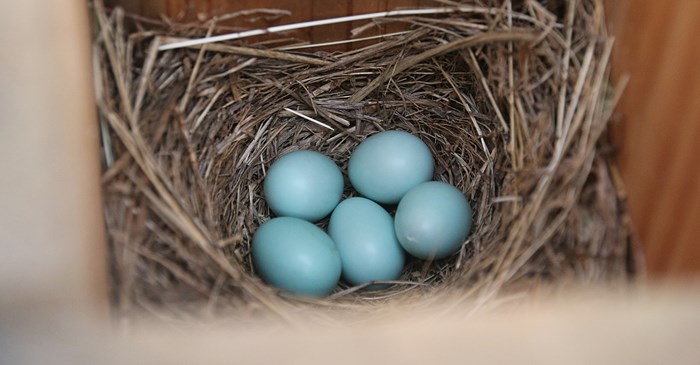If you’ve had success with a nest box setup in your backyard, maybe you’ll want to take the project to the next level. Get a tiny digital camera, mount it inside the nest box and enjoy the up-close look at little chicks emerging from their eggs! What could be better in the springtime?
It will take some research and a willingness to troubleshoot with technical wiring and devices. (Though if you search online, you’ll find online retailers that offer kits, complete with all the needed parts to get started.)
Here are some tips and things to know before you set up.
Timing is everything: You won't want to disturb an active nest to install a camera. Find out when your targeted species starts building so your spy cam is in place well beforehand.
Here’s a selection of birds that nest in boxes, and their earliest nesting season, according to Nestwatch.org.
- Eastern Bluebird: mid-March
- Black-capped Chickadee: early April
- House Wren: mid-May
- Purple Martin: mid-April
Right features, great results: Opting for a camera that runs on a power supply will eliminate disappointment from dead batteries. And because it gets dark inside a nesting box, a lens that offers night vision can offer the best view.
Scout your spot: First choose the best site for your nesting box, and make sure it’s at the height and conditions that appeal most to birds. From there, you can figure out the best camera and power setup. Boxes that are far from home may need additional equipment.
Do a test run: Once the camera is angled and installed, place a test object inside the nesting box, and mount it to the pole or tree where it will reside. This can help you make sure your devices are capturing footage and those darling eggs and hatchlings are well-lit and in focus.
Share widely: If using a web camera, spread the word and let others enjoy the fun and delight of watching new life emerge. Share links on your social media or send the word to your friends and family via email. Or, be a citizen scientist and share your findings and data on Nestwatch. It's free and helps researchers understand how the songbirds are faring.
For more about installing a spy camera in your nesting box, Nestwatch.org has plenty of helpful advice.
